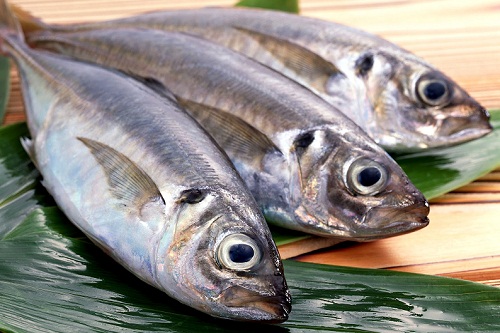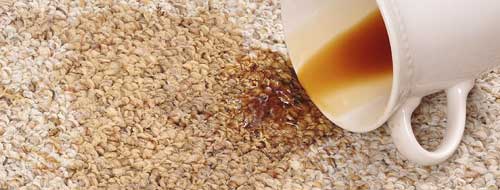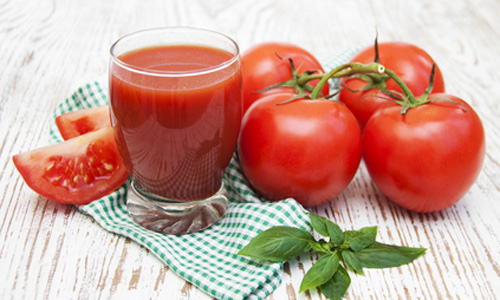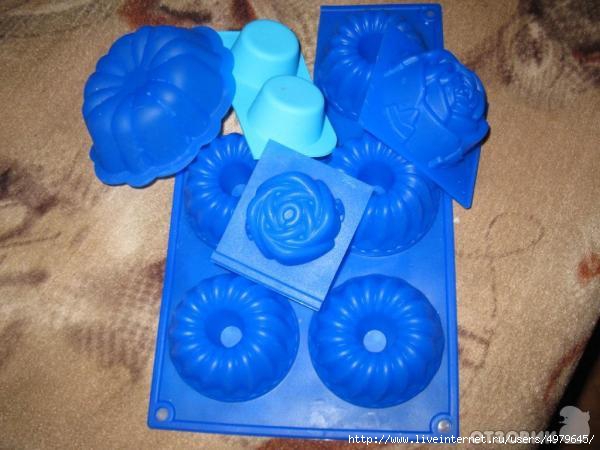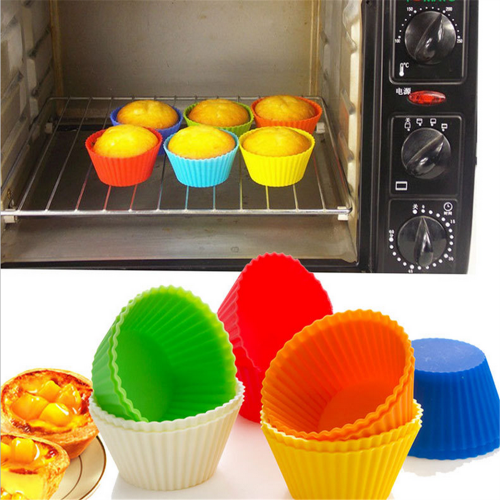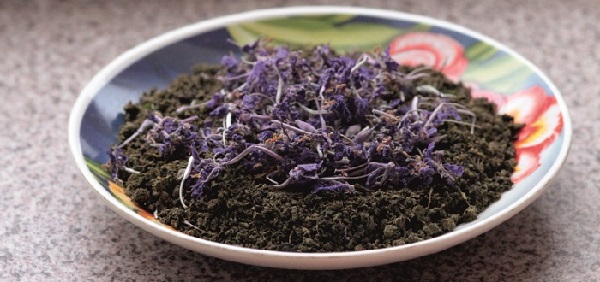Microflora of dietary fat of eggs and egg products. Self Test Questions
Microbiology of eggs. The surface of the eggs, even when laid, is seeded with various microorganisms. The contents of freshly obtained eggs obtained from healthy birds are usually free of microorganisms. Sterile eggs remain for quite some time during storage. This can be explained by the fact that the egg is a living embryonic cell (of gigantic size) with natural immunity, as well as the fact that the eggshell, the film of dried mucus on it and the shell membranes prevent the penetration of microbes.
Carbon dioxide is released from the egg during breathing through the shell. In this regard, air rushes into the eggs, along with which microbes can also get. At the same time, the contents of the egg are drying out. The penetration of microflora is enhanced in violation of the integrity of the protective films and the shell itself. However, most microorganisms die under the influence of lysozyme (the immune substance contained in the egg). With prolonged storage, the integrity of the membranes is gradually violated, the activity of protective (immune) factors decreases and the egg can undergo microbiological spoilage. To protect the eggs from the influence of microflora, conditions should be created that slow down the natural biochemical changes in them and thus save protective forces. To do this, apply cold. When eggs are stored in a humid atmosphere, the shell is moistened. Mold fungi, yeast, bacteria settle on it. The shell shell is destroyed by microbes and gradually through the pores of the shell they penetrate inside.
The main process in bacteriological egg damage is rotting. Microbes that have fallen into the egg develop near the site of introduction and form clusters of colonies that look like dark spots, which are easily detected with an ovoscope. They ferment sugar, hydrolyze fats. The presence of spots or turbidity in the egg is a sign of putrefactive spoilage.
The causative agents of egg damage are most often E. coli, Proteus, staphylococci, mold fungi (aspergillus, penicillium, etc.). Often egg spoilage is accompanied by such an abundant release of foul-smelling gaseous products (hydrogen sulfide, ammonia) that they blow up the eggshell and the resulting mass contaminates other nearby eggs with a dangerous microflora.
The feces of sick and ill birds, especially waterfowl, may contain salmonella. Egg white lysozyme has a weak effect on the bacteria of the paratyphoid group, and therefore they can multiply without causing visible changes.
Microbiology of egg products. Chicken egg products (melange, egg powder) also contain microflora that can develop under favorable conditions.
Melange is a microorganism resistant product. To prevent damage, it can only be stored frozen. Thawed melange after opening the cans can be stored for no more than 2-3 hours. It is normalized by insemination by microbes, that is, the titer of Escherichia coli should be at least -0.1; should not contain pathogenic microbes.
Egg powder contains up to several hundred thousand microbes in 1 g. When moistened or stored diluted, this microflora quickly causes spoilage. Salmonella, Escherichia coli and Proteus can persist in egg powder for a long time. Therefore, during the heat treatment of egg powder products, they should be heated to a high temperature.
100 r first order bonus
Choose the type of work Graduation work Coursework Abstract Master's thesis Practice report Article Report Review Examination Monograph Problem solving Business plan Answers to questions Creative work Essays Drawing Drawings Translations Presentations Typing Other Improving the uniqueness of the text Candidate dissertation Laboratory work Online help
Get a price
Eggs are a nutritious food product, as they contain proteins, fats, carbohydrates, mineral salts, and vitamins. At the same time, they represent a very good nutrient medium for the development of microorganisms.
However, the free passage of microbes into the contents of the egg is impeded by the shell and shell membranes. The eggshell is penetrated by minute pores, through which the air necessary for breathing the eggs penetrates from the outside, and carbon dioxide and water vapor are released from inside.
A freshly brought egg from a healthy bird is immune and usually does not contain microbes, i.e. it is sterile. During storage, the egg gradually ages and loses immunity, as a result of which favorable conditions are created for the development of microorganisms that have penetrated into it.
The penetration of microbes into the egg occurs through the pores of the shell, the surface of which is usually seeded with a large number of different microorganisms: up to several hundred thousand and even millions of cells per 1 cm2 of shell.
The microflora of the egg surface most often includes various bacteria of the intestines of birds, bacteria that have fallen from the soil and air, mold spores, etc.
Under favorable conditions, microorganisms that have fallen into the egg from the egg begin to develop intensively and cause rapid spoilage.
The rate of egg spoilage depends on temperature, air humidity in the storage room and the condition of the shell. When storing eggs with contaminated and wet shells, they deteriorate much faster than with clean and dry shells.
However, washing eggs laid for storage should never be washed, as this will lead to their rapid deterioration due to the abundant penetration of bacteria along with moisture through the shell.
The causative agents of egg damage are mainly bacteria - Proteus, Escherichia coli, Hay bacillus, micrococci, as well as molds - penicillium, aspergillus, etc.
Bacteria cause rotting of egg white, accompanied by the release of gases - hydrogen sulfide, ammonia and others, sometimes breaking the shell. During ovoscopy, a rotting egg does not show up, and its contents emit an extremely unpleasant odor.
Mold fungi develop primarily on the shell film. In the initial stage of mold, ovoscopy shows a dark spot at the site of mold development. Then this spot grows and finally the egg becomes completely opaque. Next, mold destroys the shell membrane and penetrates into the protein.
Waterfowl eggs (ducks, geese) often contain pathogenic paratyphoid bacteria that cause food poisoning. Therefore, the sale of such eggs in the distribution network and their use in catering is prohibited. They can be used in bakery and confectionery for the manufacture of well-baked small pieces of dough. During baking under the influence of high temperature, paratyphoid bacteria die.
Egg products are valuable food products, because they contain high-grade proteins that are well absorbed by the body and have a high calorie content. In their composition they contain fats, minerals, vitamins. Egg products are a supplier of lecithin, which is necessary for the nutrition of the human nervous system and is involved in the metabolism.
When storing eggs, microorganisms that enter them can multiply and cause spoilage. For long-term quality preservation, egg products are preserved by freezing or drying. When preparing egg products for canning, microorganisms from various environmental sources get into them. In the process of freezing and drying and subsequent storage, the composition of the microflora of egg products changes.
The relevance of the chosen topic is expressed by the need to control the quality of eggs and egg products for various indicators, including microbiological.
Eggs are a valuable food product. An egg consists of three parts: yolk, protein and shell. On average, protein is 56%, yolk - 32% and shell - 12% of the egg mass.
The shell protects the contents of the egg from external influences. Outside, it is covered with an overshell, and inside - with elastic shell and protein films.
The surface of the shell is penetrated by the pores necessary for gas exchange and the release of moisture from the egg. Through these pores, microorganisms can enter the egg and cause damage to the protein and yolk. At the dull end of the egg between the shell and protein films there is an air chamber (pug), which determines the freshness of the egg.
The egg protein is a viscous, transparent liquid and consists of four parts: the outer and the inner are liquid, the middle is the denser and densest hailstones (hailstones are dense twisted strands that hold the yolk in the center of the egg).
The yolk is a yellow opaque mass, the color of which is due to the presence of carotene and xanthophyll pigments in it. The yolk is enclosed in a shell, and an embryonic disk is placed on its surface.
The shape of the eggs is different: from spherical to ellipsoid-elongated; color - from white to tan.
The chemical composition of eggs depends on the species and breed of the bird, the conditions of its maintenance, feeding, time of laying, etc. The closest chemical composition of chicken and turkey eggs. Duck, goose and quail eggs contain more lipids than chicken and turkey.
Depending on the expiration date and quality, eggs are divided into types: diet and table. To dietary include eggs, the shelf life of which does not exceed 7 days, not counting the day of laying. Canteens include eggs whose shelf life does not exceed 26 days from the day of sorting, not counting the day of removal, and eggs stored in refrigerators for no more than 120 days.
During the storage of eggs, a deterioration in their quality is observed and defects are formed. To reduce the loss of eggs during storage, increase their resistance, frozen and dry egg products are produced. Dry egg products have a higher energy value than fresh eggs and frozen egg products, due to their higher content of proteins, fats and carbohydrates. For industrial processing use food eggs that meet the requirements of the standard, with a shelf life of not more than 25 days, and eggs stored in the refrigerator for no more than 120 days. Egg processing products include chilled or frozen melange, frozen yolk and protein, dry egg powder, dry protein and yolk, and dry omelet.
Frozen egg products. Freezing is the best way to preserve eggs, as the original natural properties of the product are preserved. Depending on the used part of the egg, there are distinguished frozen egg melange, frozen egg yolk and frozen egg white.
Frozen egg white has a whitish-fawn color, the consistency is solid, after thawing the consistency is liquid, it may not be completely homogeneous. There should be a characteristic tubercle on the frozen surface, if there is no tubercle, then the product may have thawed.
Frozen egg yolk is fawn yellow; after thawing, it is yellow to fawn yellow.
Ice cream egg melange is a mixture of proteins and yolks in a natural proportion, in which sodium chloride or sodium citrate or sugar is added to prevent coagulation from the same parts of the egg. Raw materials for the production of frozen egg products are chicken, high-quality table and refrigerated eggs of the first and second categories.
Egg powders are the most persistent in storage. They are produced in the form of egg powder (a mixture of yolk and protein), dry yolk and dry protein. The chemical composition of egg powder differs from the composition of a whole egg in the ratio of nutrients. Egg powders are obtained by spray drying and film drying. The consistency of egg powders is powdery, without lumps. The color of dry yolk is light yellow, of dry protein is yellowish white, uniform throughout the mass. Taste and smell are characteristic of this product, without extraneous smacks and smells. Humidity - not more than 9%.
Dry omelette - different from egg powders, dry pasteurized whole or skim milk is added to it in a ratio of 1: 1.
The egg protein contains,%: 87.9 water, 10.6 proteins, 0.9 carbohydrates, 0.6 ash; in the yolk - 48.7 water, 16.6 protein, 32.6 fat, 1.0 carbohydrate, 1.1 ash. Quail eggs contain,%: 73.3 water, 11.9 proteins, 13.1 fats, 0.6 carbohydrates, 1.1 ash. Of the fat-soluble vitamins - vitamin A (in chicken yolk 0.30 mg%, quail - 0.47 mg%), vitamin E (chicken yolk 2.0 mg%) and water-soluble vitamins (B1, B2, B6, PP). All this indicates that eggs are a good breeding ground for the development of microorganisms. However, the contents of the egg (protein and yolk) are protected from their penetration by the shell and shell membrane. There are practically no microbes in the freshly-laid egg, or very few of them.
Sterility of the egg is maintained for some time, since it has natural immunity, in which bactericidal substances play a significant role. Egg protein has the strongest bactericidal effect, it is able to kill many microorganisms, especially gram-positive sticks, molds and yeast.
The bactericidal ability of the protein is due to the presence of antibiotic substances in it: lysozyme, avidin, ovoalbumin, ovomucoid, ovomucin and carbon dioxide, which kill or inhibit the growth of microorganisms. In addition, the multiplication of microbes in a protein is suppressed by its high pH (9.2) and the resistance of protein proteins to the effects of proteolytic enzymes of microorganisms. The inner protein layer adjacent to the yolk has a stronger antimicrobial effect. The shell, shell membranes and egg white of freshly laid eggs have the most pronounced antimicrobial properties.
Egg ages especially quickly at storage temperatures above established standards. Its immunity decreases, and sufficiently favorable conditions are created for the penetration and reproduction of microorganisms in it. Some microbes penetrate mechanically through the pores of the shell, others, especially molds, germinate through the shell. Moisturizing it favors the germination of mold spores. Gyphus of the fungus, penetrating the shell and shell of the egg, contribute to the penetration of bacteria.
Microbiological processes are the main cause of egg damage. For microorganisms, the shell of the eggs is subshell, protein and partially overshell, impermeable. A freshly laid egg is usually sterile. After the demolition through the pores of the shell, microorganisms penetrate the eggs. By dissolving the egg shell with enzymes, bacteria enter the egg. In the process of the development of bacteria, the contents of the egg decompose (undergoes decay) and unpleasantly smelling substances are formed.
A sign of bacterial contamination of eggs is the appearance of a putrefactive odor, the appearance of green colonies on the egg shell and protein liquefaction. With the development of bacteria, the hailstones are destroyed, the yolk floats up and dries to the shell. If the process is deeper, the shell of the yolk breaks, the yolk mixes with the protein and a muddy-dirty liquid forms. The contents of such an egg becomes opaque, the shell becomes gray. Through the pores of the mold shell penetrate into the egg. Initially, they develop on the shell and protein films in the form of separate colonies of various colors (dark green or black, yellow or blue, red or pink) depending on the type of mold. The growing mold destroys the films, penetrates the protein and changes its contents with the release of decomposition products, which give a musty smell to the eggs and a bitter-sour taste.
During storage, the physicochemical properties of the contents of the egg gradually change (it dries, the pH of the protein rises); the antimicrobial effect of the protein, shell and shell membranes is weakened, since lysozyme and other bactericidal substances are inactivated; shell pores become more permeable. All this creates favorable conditions for the penetration and reproduction of microorganisms in the egg.
With a decrease in the bactericidal activity of the shell and shell membranes, microorganisms located on the surface of the egg penetrate through the shell and shell shells into the contents of the egg. Bacteria, penetrating the shell pores, multiply on the outer shell of the shell at the site of introduction, forming small colonies. Under the action of proteolytic enzymes of bacteria, shell membranes dissolve, bacteria penetrate the contents of the egg and actively grow and multiply in the yolk of the egg.
Due to the large size, mold spores and actinomycetes cannot penetrate the shell pores, therefore, they grow on its surface, forming small colonies, after which the mycelial filaments penetrate the pore, mechanically pushing the cells of the shell membranes mechanically. Moisturizing the shell accelerates the germination of spores. After this, molds and actinomycetes multiply, forming small colonies on the shell membranes, the membrane of the air chamber and the outer surface of the protein. Then the mycelium penetrates into the protein, where large colonies form.
When the putrefactive bacteria, molds, actinomycetes and other microorganisms multiply in the egg under the action of the enzymes secreted by them, the components of the egg (protein, yolk) decompose with the formation of specific decomposition products of proteins, fats, carbohydrates, lecithin, i.e., its spoilage occurs. Depending on which component of the egg (protein or yolk) microorganisms multiply, their biochemical activity and other physiological characteristics of the changes in egg contents are diverse.
Infection of eggs with microorganisms can occur endogenously and exogenously.
With endogenous infection, microorganisms penetrate the egg during its formation in the ovary or oviduct of a sick bird.
Infection of eggs with pathogens of various infectious diseases can occur during their formation. Such pathogens are viruses, bacteria, fungi. Often, birds can be hidden carriers of infectious diseases and carry eggs containing these microorganisms.
Eggs obtained from a bird suffering from salmonellosis, tuberculosis, respiratory mycoplasmosis, leukemia and other infectious diseases have important epidemiological and epizootological significance. Often the occurrence of toxic infections in humans is associated with the consumption of eggs and egg products. The causative agents of many infectious diseases of birds are transmitted transovarially, i.e. through the egg. Of particular danger are waterfowl eggs, which are often infected with S. enteritidis, S. choleraesuis, S. typhimurium, S. newport, S. dublin, S. anatum and other salmonella. In this regard, it is forbidden to sell duck and goose eggs in food stores, in markets and sell them raw through a food chain. Of the salmonellosis in chickens, pullorosis is most often noted. The main source of infection in case of pullorosis is chicken carriers, from which eggs infected with S. pullorum gallinarum are obtained. Chicks with pallorosis are excreted from such eggs, which secrete the pathogen into the environment.
The number of infected eggs obtained from chickens of bacterial carriers can vary greatly and make up 10-95%. The largest number of infected eggs is found during the period of enhanced oviposition, which is associated with a weakening of the laying organism and an increase in the virulence of the pathogen. The use of eggs infected with S. pullorum-gallinarum is one of the causes of foodborne toxicoinfections in humans.
Eggs laid by chickens reacting to tuberculin can be infected with the causative agent of tuberculosis in 3-19% of cases. The contamination of eggs obtained from chickens with a generalized tuberculosis process reaches 50%. Most often, M. avium is found in chicken eggs. Eggs obtained from patients with tuberculosis and chickens suspicious for this disease, dysfunctional poultry houses, are used for food purposes only after preliminary boiling or other heat treatment. The causative agent of respiratory mycoplasmosis (Musoplasma galhsepticum) is transmitted mainly by the transovarial route.
Endogenous infection of eggs is also noted by pathogens of plague, infectious encephalomyelitis and bird laryngotracheitis. The possibility of transmission of the pathogen through the egg in case of pasteurellosis (cholera), infectious bronchitis, chicken neutrolymphomatosis and other infections has been proven.
Endogenous infection of food eggs with viruses can also be observed when the birds are immunized with live virus vaccines used in industrial poultry farming. In this regard, vaccination must be completed before the collection of food eggs, that is, before picking houses. In addition, endogenous infection of eggs is possible in diseases of the ovaries and oviducts of various etiologies. In this case, eggs can be infected with staphylococci, Escherichia coli, Proteus coli, Pseudomonas aeruginosa, fluorescent bacilli and other microorganisms.
Exogenous insemination of eggs is associated with contamination of the shell with droppings, soil, litter, feathers, etc. The purity of the shell is an important indicator of the quality of food eggs. Contaminated shells not only spoil their presentation, but also dramatically reduce the duration of storage. Depending on the contamination of the shell, the number of microorganisms on it varies within wide limits. On 1 cm2 of the surface of fresh clean eggs there are tens and hundreds, very rarely thousands of bacteria, and contaminated eggs - tens of thousands and even millions of microbial cells. Egg shell contamination by pathogenic and conditionally pathogenic microflora occurs most often with an outdoor chicken keeping system in poultry houses with poorly equipped nests, with poor quality litter and a violation of the microclimate. With the floor keeping of birds, up to 20-25% of food eggs are obtained with contaminated shells, which for this reason cannot be realized as dietary ones.
The highest yield of eggs with a clean shell surface (on average 96%) is observed when the birds are kept in a single-tier automated battery, which is explained by a high culture and level of mechanization.
Egg melange is a mixture of protein and yolk, usually contains a significant number of various microorganisms, and pathogenic or conditionally pathogenic bacteria can get into its production. Therefore, egg products in the preparation require strict adherence to sanitary conditions. In the process of freezing and subsequent storage, microorganisms in the melange partially die, however, a sufficient number of them can remain, especially if the melange was not frozen immediately after manufacture. Melange is a perishable product; it is allowed to store it only in frozen form. During thawing, microorganisms multiply intensively, so the thawed product must be used for several hours, keeping it refrigerated.
To reduce microbial contamination, frozen egg products are pasteurized at 60-65 ° C for 1-3 minutes and poured into cans. Filled cans are sealed and sent to refrigeration chambers for cooling or freezing. The temperature inside the frozen products should be from -6 to -10 ° C, chilled - no more than 6 ° C.
Frozen egg products should not have extraneous smacks and smells, as well as shell fragments and any mechanical impurities. High-quality frozen egg products contain in 1 g no more than 50 thousand bacteria; of doubtful quality - more than 1 million. The titer of Escherichia coli - not less than 0.1, Salmonella should be absent. Frozen egg products infected with typhoid and putrefactive microbes are not allowed to be sold.
In the manufacture of egg powder by drying the egg mass, not all microorganisms die. Depending on the degree of contamination before drying and the sanitary conditions of production, the number of bacteria in the powder can vary significantly. Often several dozens and even hundreds of thousands of microbes are found in it in 1 g. These are mainly word-forming and coccal forms of bacteria.
Egg spoilage can occur from a purely enzymatic process without the presence of bacteria or from penetration through the shell of microorganisms.
The development of microorganisms contributes to the appearance of various spoilage. The microbiological deterioration of eggs and egg products is based on the processes of decay and mold.
When proliferating aerobic aerobic bacteria of the genus Pseudomonas and Staphylococcus aureus multiply, the protein becomes gray, cloudy and liquefied; later on, the protein and yolk acquire a greenish tint, turning into a dark green color (green rot). As a result of the multiplication of putrefactive aerobic bacilli, the yolk acquires a light yellow color. Due to the destruction of the vitelline membrane, the protein is mixed with the yolk, and a uniform turbid liquid mass is formed. With ovoscopy, such an egg is not visible.
The reproduction of a wonderful stick, a pink micrococcus, as well as some yeast and molds forming a red pigment in an egg causes the coloring of its contents to pink or red. With ovoscopy, a red tint in the yolk and redness of the protein, which can be diluted or viscous (red or pink rot), are noticeable.
In the case when Escherichia coli, Proteus coli, some bacteria of the pseudomonas genus and other putrefactive microbes multiply in the egg, the contents become black and cloudy and do not appear through ovoscopy. The yolk is cloudy, floating freely in a liquid protein, which can be grainy and viscous, with a green or brown tint. Due to the formation of a large amount of gas, the pressure inside the egg increases, so the shell breaks, and the contents of the egg emit a fecal odor (black rot).
White rot causes Micrococcus. Protein and yolk mix together.
Egg spoilage caused by putrefactive bacteria, in which they are not visible during ovoscopy, is called "bacterial cuff". The egg is opaque, except for the air chamber, which is enlarged and mobile; the outer surface of the shell is grayish or marbled, often with a putrid odor; the contents of the egg in the form of a cloudy mass of gray-green and dirty yellow color have the smell of decomposition. The defect occurs as a result of the development of putrefactive bacteria.
The sour egg defect is caused by many bacteria, including Escherichia coli, is not detected during ovoscopy, and when opened the egg emits a pungent odor.
In addition to putrefactive bacteria, molds and actinomycetes often multiply in eggs, which grow primarily on the shell membrane and most quickly near the air chamber. Then they destroy the shell membrane and penetrate into the protein.
When mold grows on the shell-inshells, where they form colonies in the form of colored spots, depending on the size of the colonies, the defect “small or large spot” is distinguished. When the shell membranes are completely covered with colonies of molds, the protein and yolk are mixed, the egg is not visible during ovoscopy, the defect is called “moldy cuff”.
The defect of the eggs “small spot” is characterized by the presence under the shell of small motionless spots with a total size of 1/8 of the surface of the egg; appear as a result of the development of mold and bacteria during egg storage at elevated temperatures and high humidity.
A large spot is under a shell with a total size of more than 1/8 of the surface of the egg, formed by colonies of molds and bacteria under the same storage conditions.
Mold cuff is characterized by the fact that the egg is not transparent when scanned, except for the feather, since all contents are affected by mold, protein and yolk are mixed. The egg smells mold.
Eggs with signs of spoilage "bacterial cuff" and "moldy cuff" are unsuitable for food purposes. In the case of a “small or large spot” defect, eggs are used after laboratory testing as directed by sanitary authorities.
Salmonella is often found in waterfowl eggs, especially in ducks. For the prevention of food poisoning, the sale of duck and goose eggs in catering establishments and in the distribution network is prohibited.
The quality of eggs is taken into account by the state of the shell and the air chamber, its height along the major axis of the egg; the state and mobility of the protein and yolk (during ovoscopy), as well as the determination of the mass of the egg. The change in the quality of eggs is determined by the yolk and protein index, density and index of egg shape, luminescence of the shell or contents of the egg, foam index and foam resistance.
The most characteristic and affordable indicator of a change in quality is the yolk index, or flattening coefficient. The yolk of a fresh egg is convex, and the stored egg takes a very flattened shape. The ratio of the height of the yolk to its diameter is the index of the yolk, which decreases as the egg is stored from 0.5 to 0.3.
The eggshell luminescence color during egg storage changes from raspberry to bluish-gray, which is due to a change in the pigment of ovoporphyrin. Microbe-affected eggs luminesce in different colors depending on the development of microorganisms.
Microbiological quality indicators in accordance with the "Hygienic requirements for the quality and safety of food raw materials and food products" RB are presented in Appendix 1.
When stored in eggs, processes occur that cause a deterioration in their quality or spoilage.
Fresh, clean, unwashed eggs are laid for storage. Washed eggs, if washing is not carried out immediately after laying, less resistant. In some cases, eggs may be washed with detergents and disinfectants.
To prevent the penetration of microbes, and, consequently, to change the shelf life of eggs, the shell is treated with mineral oil or oil with the addition of antimicrobial substances, as well as solutions of film-forming substances that are food-safe.
Dietary and table eggs are packaged separately by category. They transport eggs in isothermal wagons with a temperature of at least 2 ° C, in covered cars, insulated in winter and protected from sunlight in the summer.
Dietary eggs are stored at a temperature not exceeding 20 ° С and not lower than 0 ° С, table eggs - at a temperature not exceeding 20 ° С. Eggs with damaged shells are stored at a temperature not exceeding 10 ° C. At catering establishments, eggs are stored from May 1 to September 1 for 3 days, and in the cold period - 6 days.
In order to slow down the natural biochemical changes in the egg and preserve the protective properties of the shell, shells and egg white, it is necessary to store the eggs in cool, dry rooms at a temperature of from -2 to 0 ºС and relative humidity not higher than 85%.
In conditions of elevated temperatures and high humidity, the inactivation of bactericidal substances of the egg is accelerated. For example, if you store eggs at high humidity and a temperature of 16-18 ° C and above, then after 5-6 days mobile mesophilic bacteria penetrate into them, whereas at a temperature below 15 ° C and low air humidity (60-65%) the penetration and development of mesophilic microbes in an egg is greatly slowed down.
Frozen egg products are packed in metal cans of 5, 8, 10 kg. Store them at a temperature of -9 to 10 ° C and a relative humidity of 80-85% for up to 8 months.
Poultry egg is a complex biological complex, which includes all the nutrients and biologically active substances necessary for the life of the body, enclosed in protective shells.
Eggs contain all the nutrients that ensure the normal functioning of the human body, and have high nutritional value, which is determined by the content of high-grade proteins and fats, as well as biologically valuable substances. Therefore, both eggs and processed egg products are an excellent breeding ground for the development of various microorganisms that can multiply during storage and cause food spoilage.
1. Kazantseva N.S. Commodity research of food products: Textbook. - M .: Publishing and trading corporation "Dashkov and Kº." - 2007. - 400 p.
2. Kondrasheva EA, Konik N.V., Peshkova T.A. Commodity research of food products: Textbook. - M.: Alpha-M: INFRA-M, 2007 .-- 416 p.
3. Microbiology and sanitation: textbook. allowance for students of the specialty "Commodity research and examination of goods" of institutions providing higher education / I.Yu. Ukhartseva [et al.] - Minsk: Information Center of the Ministry of Finance, 2006. - 332 p.
4. Mikulovich L.S. Commodity research of food products: a textbook. - Minsk .: Higher school, 2006 .-- 416 p.
5. Mudretsova-Viss K.A., Dedyukhina V.P. Microbiology, sanitation and hygiene: a textbook. - 4th ed., Rev. and add. - M .: “FORUM”: INFRA-M, 2008. - 400 p.
6. Sanitary rules and norms “Hygienic requirements for the quality and safety of food raw materials and food products” SanPiN 11-63 RB 98. - 236 p.
7. Commodity research and organization of trade in food products: Textbook. for the beginning. prof. education / A.M. Novikova, T.S. Golubkina, N.S. Nikiforova, S.A. Prokofiev. - 2nd ed., Erased. - M .: ProfObrIzdat, 2002 .-- 480 p.
8. Commodity research and examination of consumer goods: Textbook. - M .: INFRA-M, 2006 .-- 544 p.
9. Commodity research of food products: Textbook. allowance / L.S. Mikulovich, A.V. Loktev, I.N. Furs and others; Under the total. ed. O.A. Brilevsky. - Мn .: BSEU, 2001 .-- 614 p.
10. Fedorov Yu.S. Commodity research of egg products: Textbook. allowance. Mn .: BSEU, 1998 .-- 65 p.
11. http://www.krasnodarkredit.ru/mikro/mik221.html / Microbiology of eggs
12. http://www.food-industry.ru/articles/articles_718.html / "Features of the sanitary-microbiological control of raw materials and food products of animal origin": textbook / comp. N.I. Khamnaeva - Ulan-Ude: Publishing House of VSTU
Table. Microbiological quality indicators of eggs and egg products
| Index | Product group | KMAFAN M CFU / g, not more than | Product mass (g) in which are not allowed | Notes | |||
|
(if-forms) |
S. aureus | Proteus | Pathogenic incl. salmonella | ||||
| 1 | 2 | 3 | 4 | 5 | 6 | 7 | 8 |
| 6.1.15.1. | Chicken egg, quail dietary |
5x10 2 | 0,1 | - | - | 5x25 * |
spend in |
| 6.1.15.2. | Table egg | 5x10 4 | 0,1 | - | - | 25* | *also |
| 6.1.15.3. | Frozen egg melange, frozen egg yolks and whites | 5x10 5 | 0,1 | 1,0 | 1,0 | 25 | |
| 6.1.15.4. | Frozen egg melange with salt and sugar | 5x10 5 | 0,1 | 1,0 | 1,0 | 25 | |
Table continuation.
Note. Source )



